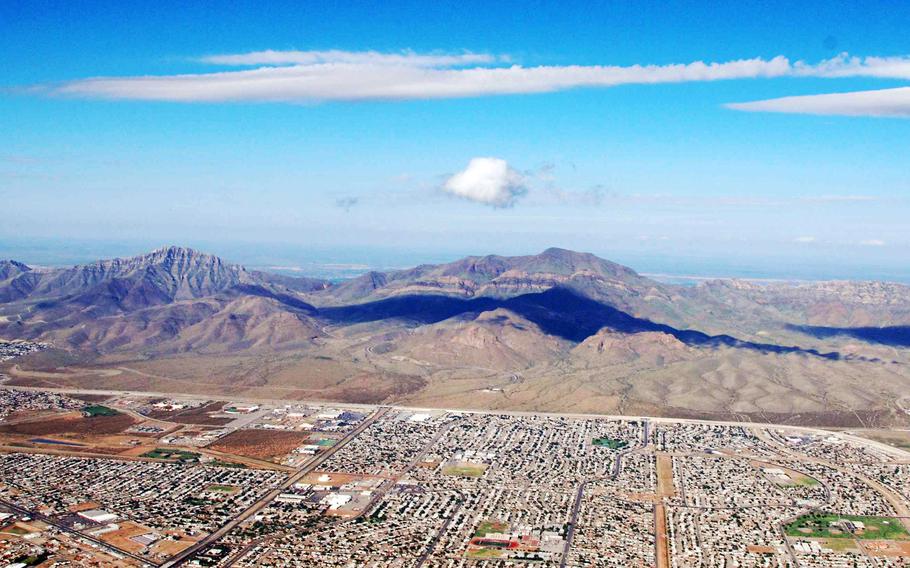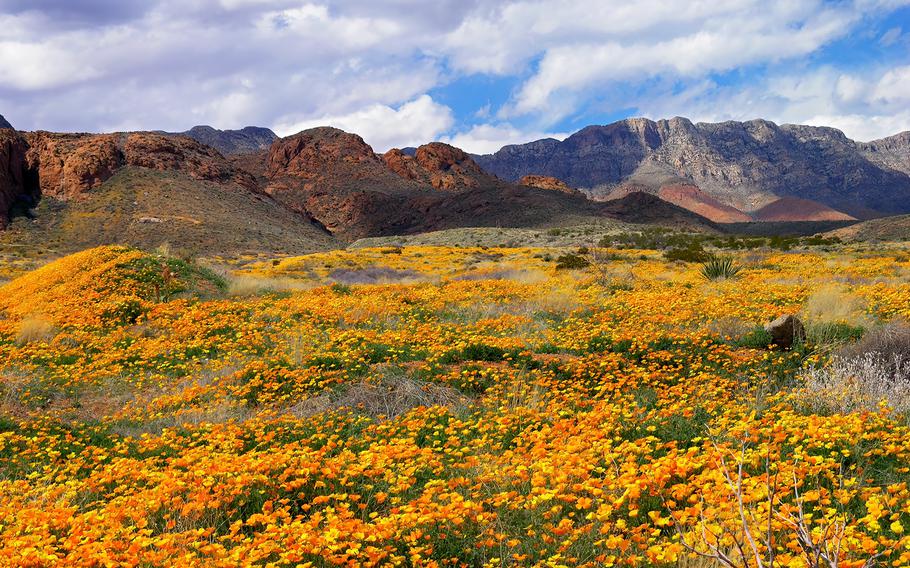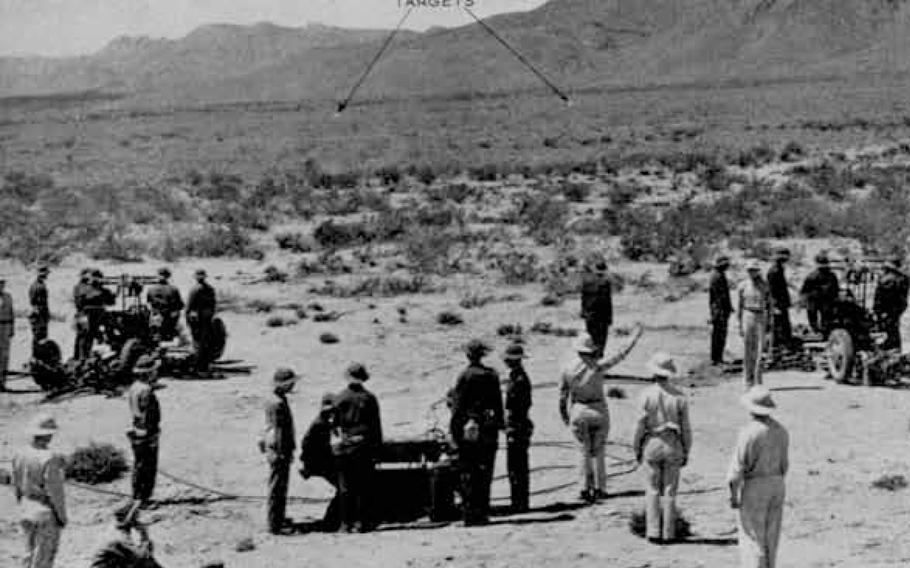
An aerial view of Castner Range as it connects to the city of El Paso, Texas. The range is a noncontiguous piece of Fort Bliss that was last used by the Army as a firing range in 1966. (Scott Cutler for The Frontera Land Alliance)
AUSTIN, Texas — The Army will spend years leading a massive cleanup of unexploded ordnance at a former Fort Bliss firing range before the land can be opened to the public as a national monument, according to the White House and service leaders.
“Castner Range has been an indelible part of U.S. Army history, but now it’s time to write a new chapter about the future of this natural treasure,” Undersecretary of the Army Gabe Camarillo, who is from El Paso, said in a statement. “Moving forward, the U.S. Army stands ready to execute a complete cleanup, manage remaining munitions and make Castner Range safe for public access.”
The land is on Fort Bliss, which is just outside El Paso in west Texas along the border with New Mexico. Since the Army deemed the land as excess in 1971, community members have advocated for its preservation as it sat closed off because thousands of rounds of unexploded ordnance remain scattered throughout the range.
On Tuesday, President Joe Biden named Castner Range as a national monument, announcing the Army will remain the manager of the land and continue to lead the efforts to clear it of dangerous munitions, such as grenades, mortars, rockets and small-arms items. It could be nearly 15 years before the work is complete, the Army said.

Castner Range is known for its Mexican gold poppies that bloom each spring. (Mark Clune for The Frontera Land Alliance)
Castner Range is nearly 7,000 acres, and its historical significance predates the Army’s use, which began in 1926. The land is known for its Mexican gold poppies that bloom each spring, adding orange and yellow fields throughout the desert landscape, and it holds 41 prehistoric and historic archaeological sites that include cave etchings of Native Americans and stone shelters built by ranchers.
“Our country's natural treasures define our identity as a nation. They’re a birthright,” Biden said Tuesday as he announced the range as a national monument, a type of federal park designation used to conserve, protect, restore and manage public lands.
It is the first national monument under the military’s management since national battlefields were transferred to the National Park Service in the 1930s, according to the White House.
Rachel Jacobson, assistant secretary of the Army for installations, energy and environment, said the Army is “excited” to lead the conservation effort of Castner Range.
“The Army has a proud history of managing natural resources and recreational areas on installations,” she said.
Biden has the authority to declare Castner Range a national monument through the Antiquities Act of 1906, which presidents have used more than 250 times. Biden on Tuesday also announced Nevada’s Avi Kwa Ame, also known as Spirit Mountain, as a national monument. In the fall, Biden had created the Camp Hale-Continental Divide National Monument in Colorado.
Biden’s proclamation said the dangerous conditions that have kept the range closed have also allowed the land to revert to a natural state that is representative of the natural Chihuahuan Desert ecosystem of the region.

Battery H, 260th Coastal Artillery (AA) Regiment on firing point “A-1” at Castner Range in 1941. (Coast Artillery Journal)
But for 40 years, the Army used Castner Range as a firing range before shutting it down in 1966 and leaving the land littered with unexploded ordnance.
The Army said it has been conducting a cleanup of ordnance on the range since 1971. Only 1% of the 6,803 acres has been 100% investigated for ordnance, Guy Volb, a spokesman at Fort Bliss, said in August.
Based on the cleanup of that small segment, base officials estimate there could be more than 4,800 additional munitions scattered across the range, he said.
The Army has spent about $7.2 million since 2007 through the Comprehensive Environmental Response, Compensation, and Liability Act and Defense Environmental Restoration Program, according to Camarillo’s office. The money is allocated through the Army’s Environmental Restoration account.
In 2018, the Army began a study on the cleanup process that should be completed in February 2025, according to the service. The Army will then develop a plan and seek formal input from regulators and the public before initiating the cleanup.
The Army anticipates cleanup work to occur between 2027 and 2037.
Once deemed safe from explosives, community advocates envision a park with trails and space for hiking, mountain biking, recreational driving or camping and backpacking.
Because the land has been inaccessible for so long, it’s unclear exactly what remains of sites where Native American tribes lived, including Apache and Pueblo peoples, and the Comanche Nation, Hopi Tribe and Kiowa Indian Tribe of Oklahoma, according to Biden’s proclamation.
Three of those sites — the Fusselman Canyon Rock Art District, the Northgate Site, and the Castner Range Archeological District — are listed in the National Register of Historic Places, according to the proclamation.
Janaé Reneaud Field, executive director of the Frontera Land Alliance, a conservation group in El Paso, said she was excited by Biden’s announcement Tuesday.
“We look forward to being involved with the planning, and the next phases for cleanup, to determining public access, as well as preservation of ecological, historic and cultural components,” she said.